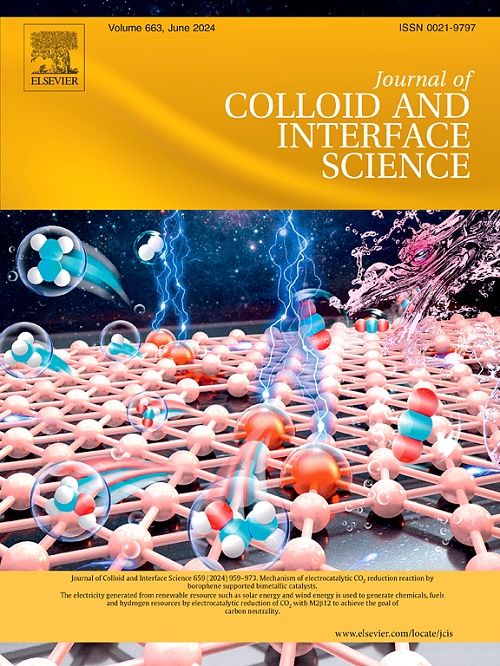Aqueous high-energy-density capacitor with 2 V output voltage for alternating current line filtering
IF 9.4
1区 化学
Q1 CHEMISTRY, PHYSICAL
引用次数: 0
Abstract
High-energy-density aqueous filtering capacitors are essential for the conversion of alternating current to direct current in contemporary integrated circuits. Yet their energy density is limited by the 1.23 V decomposition voltage of water. Here, we report an asymmetric electrolyte configuration to effectively suppress water decomposition activity, enabling the development of an aqueous filtering capacitor with a 2 V operating voltage, as well as an ultrahigh areal specific energy density of 4.51 ± 0.26 mF V2 cm−2 (1.25 ± 0.07 μWh cm−2) at 120 Hz. This significant energy density value surpasses most reported filtering capacitors with a comparable phase angle of −(75.0 ± 1.0)° (Chi et al., 2017; Park et al., 2021; Zhang et al., 2022). Additionally, the capacitor presents outstanding cycling stability with a capacitance retention of 97.9 % after 200,000 cycles. Furthermore, we employ an alternatingly stacked assembly technique to conveniently construct compact and lossless integrated filtering capacitors, enabling efficient alternating current output smoothing from wind generator and ensuring stable power supply for light-controlled circuit. This work substantially advances line filtering electrochemical capacitors toward application in modern circuits.

输出电压为 2 V 的水基高能量密度电容器,用于交流线路滤波
本文章由计算机程序翻译,如有差异,请以英文原文为准。
求助全文
约1分钟内获得全文
求助全文
来源期刊
CiteScore
16.10
自引率
7.10%
发文量
2568
审稿时长
2 months
期刊介绍:
The Journal of Colloid and Interface Science publishes original research findings on the fundamental principles of colloid and interface science, as well as innovative applications in various fields. The criteria for publication include impact, quality, novelty, and originality.
Emphasis:
The journal emphasizes fundamental scientific innovation within the following categories:
A.Colloidal Materials and Nanomaterials
B.Soft Colloidal and Self-Assembly Systems
C.Adsorption, Catalysis, and Electrochemistry
D.Interfacial Processes, Capillarity, and Wetting
E.Biomaterials and Nanomedicine
F.Energy Conversion and Storage, and Environmental Technologies

 求助内容:
求助内容: 应助结果提醒方式:
应助结果提醒方式:


